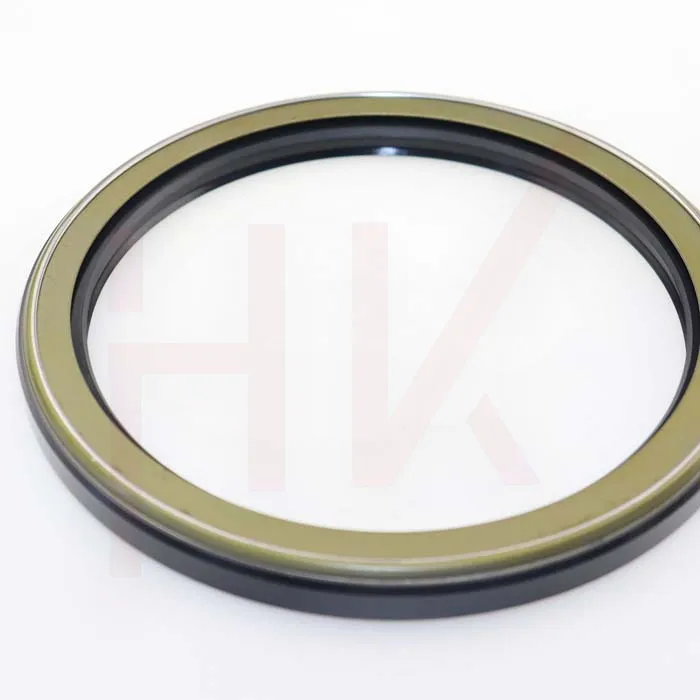Dec . 22, 2024 00:29 Back to list
wiper seal types
Understanding Wiper Seal Types Essential Components in Fluid Control Systems
Wiper seals are critical components used in various applications, particularly in hydraulic and pneumatic systems. Their primary function is to retain fluids while preventing contamination from external elements. This article will delve into the different types of wiper seals, their construction, applications, benefits, and considerations for selection.
What are Wiper Seals?
Wiper seals, also known as scrapers, are designed to remove any debris, dirt, or fluid contaminants from the surfaces of a moving piston or rod. By doing so, they ensure that the internal components of hydraulic and pneumatic cylinders operate smoothly and efficiently. Wiper seals protect more sensitive seals, such as rod seals and piston seals, by keeping them clean.
Types of Wiper Seals
1. U-shaped Wiper Seals U-shaped wiper seals feature a design that resembles the letter 'U' and are often made of rubber or polyurethane. They are typically used in standard applications, offering adequate sealing performance. By conforming to the rod's surface, they can effectively wipe away contaminants before they enter the seal area.
2. Lipped Wiper Seals Lipped wiper seals have an additional lip that extends from the main body of the seal. This lip enhances the sealing capability, providing an extra barrier against contaminants. These seals are particularly useful in applications where there may be increased exposure to dirt and debris, such as in construction or mining equipment.
3. Flat Wiper Seals These are simple, flat seals used in environments where minimal pressure is present. Flat wiper seals are often found in lighter-duty applications and provide basic wiping functions without any significant sealing pressure.
4. Tapered Wiper Seals Tapered wiper seals offer a unique design where one side is thicker than the other, allowing for a more adaptable fit against the rod or piston. These seals can minimize wear and prolong the lifespan of the moving components, making them suitable for high-speed and heavy-duty applications.
wiper seal types

5. Polyurethane Wiper Seals Polyurethane is commonly used in wiper seal construction due to its excellent wear resistance and ability to handle a wide range of temperatures. Polyurethane wiper seals are ideal for demanding applications, such as those found in automotive, aerospace, and industrial machinery, where durability and performance are critical.
Applications of Wiper Seals
Wiper seals are commonly used in various industries, including automotive, aerospace, construction, and manufacturing. They are found in applications such as hydraulic cylinders, pneumatic cylinders, and various machinery requiring oil or fluid containment. In automotive applications, wiper seals are crucial in steering systems, suspensions, and hydraulic brake systems, where fluid integrity and cleanliness are paramount.
Benefits of Using Wiper Seals
The primary advantage of wiper seals is their ability to protect sensitive sealing elements from contamination, which can lead to premature failure and system inefficiencies. Additionally, wiper seals help maintain a clean working environment for the hydraulic and pneumatic systems, promoting optimal operation and enhancing equipment longevity. By reducing wear on internal components, wiper seals contribute to overall maintenance cost savings and improved reliability.
Considerations for Selection
When choosing wiper seals, several factors should be considered, including the operating environment, fluid type, temperature ranges, and pressure conditions. Compatibility with the fluid is crucial since some materials may degrade in the presence of certain chemicals. Additionally, evaluating the environmental conditions, such as exposure to dust, dirt, and moisture, will help determine the most effective wiper seal type for the application.
Conclusion
In summary, wiper seals play a vital role in ensuring the efficiency and longevity of hydraulic and pneumatic systems. Understanding the different types of wiper seals and their specific applications can help in selecting the right seal for your needs. By prioritizing the protection of sensitive components from contamination, organizations can enhance the performance and reliability of their machinery and systems.
-
Unlocking the Potential of Hydraulic Systems with Essential Sealing Solutions
NewsAug.06,2025
-
Unleash the Power of Your Hydraulic Systems with Our Premium Seal Kits
NewsAug.06,2025
-
Specialized Hydraulic Seal Kits for Breakers, Pistons, and Presses
NewsAug.06,2025
-
Revitalize Hydraulic Systems with Premium Repair and Seal Kits
NewsAug.06,2025
-
Fortify Your Cylinders with Premium Sealing Solutions
NewsAug.06,2025
-
Elevate Hydraulic System Reliability with Specialized Seal Kits
NewsAug.06,2025
-
TCN Oil Seal Metal Ring Reinforcement for Heavy Machinery
NewsJul.25,2025
Products categories
















